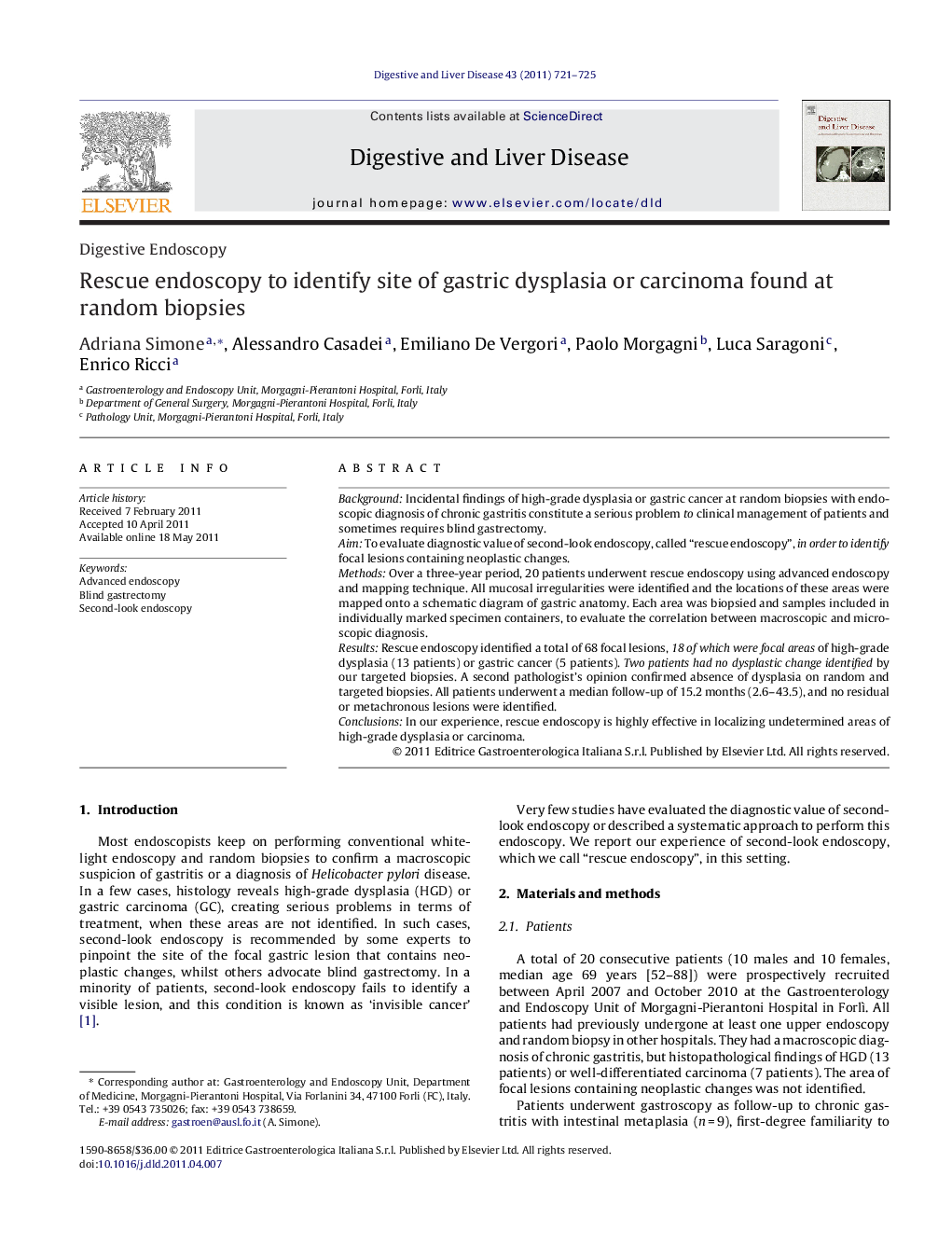| Article ID | Journal | Published Year | Pages | File Type |
|---|---|---|---|---|
| 3263984 | Digestive and Liver Disease | 2011 | 5 Pages |
BackgroundIncidental findings of high-grade dysplasia or gastric cancer at random biopsies with endoscopic diagnosis of chronic gastritis constitute a serious problem to clinical management of patients and sometimes requires blind gastrectomy.AimTo evaluate diagnostic value of second-look endoscopy, called “rescue endoscopy”, in order to identify focal lesions containing neoplastic changes.MethodsOver a three-year period, 20 patients underwent rescue endoscopy using advanced endoscopy and mapping technique. All mucosal irregularities were identified and the locations of these areas were mapped onto a schematic diagram of gastric anatomy. Each area was biopsied and samples included in individually marked specimen containers, to evaluate the correlation between macroscopic and microscopic diagnosis.ResultsRescue endoscopy identified a total of 68 focal lesions, 18 of which were focal areas of high-grade dysplasia (13 patients) or gastric cancer (5 patients). Two patients had no dysplastic change identified by our targeted biopsies. A second pathologist's opinion confirmed absence of dysplasia on random and targeted biopsies. All patients underwent a median follow-up of 15.2 months (2.6–43.5), and no residual or metachronous lesions were identified.ConclusionsIn our experience, rescue endoscopy is highly effective in localizing undetermined areas of high-grade dysplasia or carcinoma.
